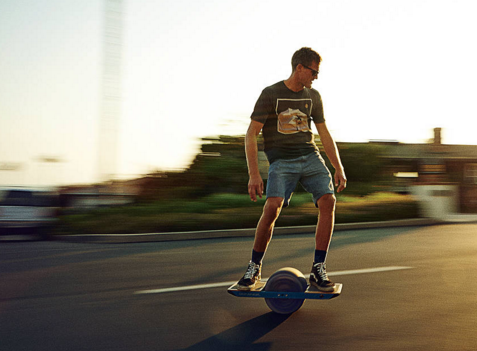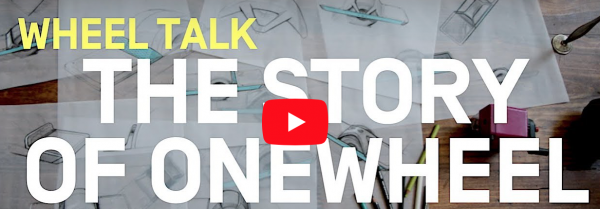Companies
How this one-wheeled skateboard lets riders cruise without crashing

By Rob Verger
Popular Science
May 14, 2019 — Santa Cruz, CA
(Photo: Onewheel Pint. Source: Onewheel website)
We tried out the electric Onewheel Pint and did not fall down.
The Onewheel Pint looks different from most of the other electric people-movers out there: it’s an electric skateboard built around a single 6.5-inch-wide air-filled tire. If you’re used to seeing two-wheeled hoverboards, or four-wheeled skateboards, this craft appears to be unstable.
Trying one out recently, I was a little worried I’d bite it on a hard Manhattan sidewalk. The systems that keep the board balanced aren’t apparent when you look at it, after all, so getting on requires a small leap of faith. But save for one awkward and undignified dismount from this electric one-wheeled skateboard, I successfully navigated around pedestrians and experienced zero disasters while riding the Onewheel Pint on New York City’s crowded public walkways. It helped that Jack Mudd, the company’s “chief evangelist,” literally held my hand or otherwise physically guided me for most of the time that I was trying it out.
How it works
Onewheel has been making single-wheeled skateboards since 2014, but the Pint—the device I tried—is their newest, least-expensive, smallest, and lightest one yet. It has a top speed of 16 miles per hour and a range of 6 to 8 miles.
Inside the hub of the big, single wheel that constitutes the gadget’s entire propulsion system, is an electric motor. That motor performs two essential duties: it spins to propel you forward or backwards down the sidewalk, and it makes constant small adjustments to keep you balanced.
One foot goes behind the wheel, and the other goes in front of it. Under that back foot is the battery that gives the motor the juice it needs, and under the front foot is a microprocessor that makes the whole mini-transportation device work. Also under your front foot are two pressure-sensitive pads that detect when you’re standing on the board.
Three internal accelerometers and gyroscopes continuously measure the orientation of the board in space—its roll, pitch, and yaw. To picture what roll, pitch, and yaw are, imagine the way an airplane can roll side to side, its nose can pitch up and down, and it can turn itself to point in different compass directions; that will give you an idea of the different motions the Onewheel is monitoring.
Continue reading here: https://www.popsci.com/onewheel-pint-electric-skateboard-review
###
Tagged Onewheel








